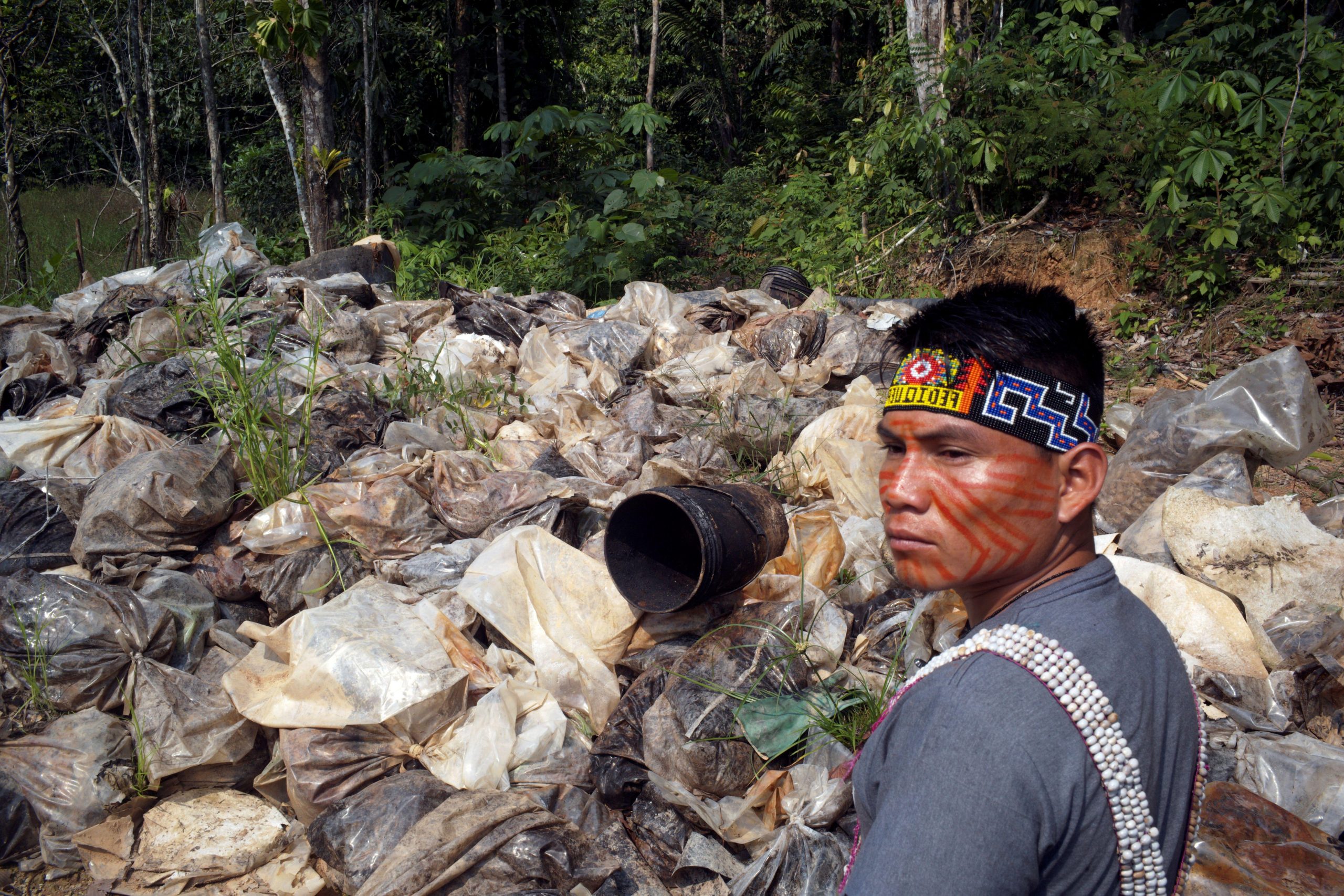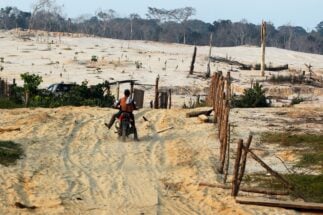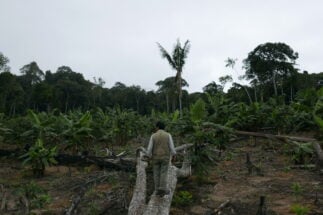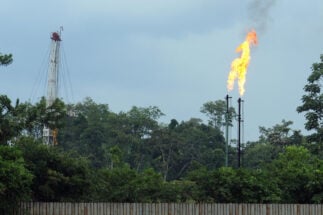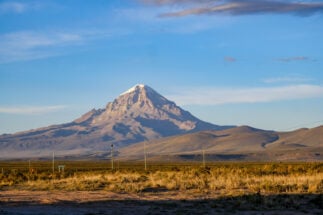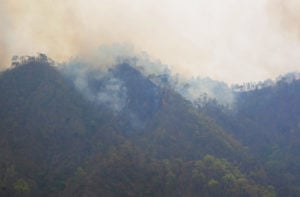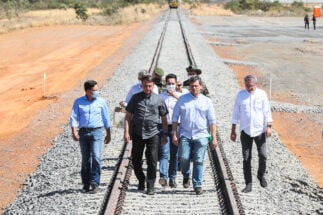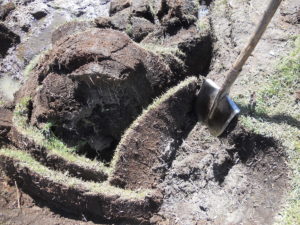On 15 January, nearly 12,000 barrels of oil were spilled at La Pampilla, a refinery operated by the Spanish energy giant Repsol in Ventanilla, 20 km north of Peru’s capital, Lima. It stands as one of the biggest environmental disasters in Peru’s history, but it is far from a new story for the country.
87,370
The number of barrels of oil estimated to have been spilled across Peru between 1997 and 2021, according to Oxfam and CNDDHH
Between 1997 and 2021, there were 566 oil spills in the Peruvian Amazon, 404 along its coast and five in the highlands, a new report by Oxfam and the National Coordinator for Human Rights (CNDDHH), a Peruvian civil society coalition, has revealed. More than 87,000 barrels are thought to have been spilled across the country.
In the days after the Repsol spill, PUINAMUDT, an indigenous organisation, issued a statement expressing its solidarity with those affected. But it also sought to draw attention to the plight of the Amazonian communities it represents, comparing the response and outcry to the Lima spill with the “abandonment” seen in its territories despite decades of damage.
“While in the case of the spill in Lima, the reaction of authorities, officials, members of congress and the press has been immediate, and legal measures have even been taken so that Repsol’s legal representatives do not leave the country, our previous denunciations have seen postponement, indifference and laziness,” PUINAMUDT said.
The organisation claims that on 22 January, a week after the Repsol incident, a spill occurred in Block 192, the country’s largest oil field, situated in the northern Peruvian Amazon. However, state agencies reportedly did not show up to attend to the disaster.
For reporting these types of situations, we have been killed, tortured and imprisoned
José Fachín, a Kichwa indigenous leader and chief advisor to the Peoples Affected by Oil Activity (PAAP) group, told Diálogo Chino that after the Ventanilla spill, Amazon communities “felt discriminated against, because in addition to the absence of the state and the press when oil spills occur in the Amazon, what little is reported on these events contributes to the persecution of the indigenous peoples, who have often been blamed for these environmental disasters.
“For reporting these types of situations, we have been killed, tortured and imprisoned, and we continue to be persecuted judicially,” Fachín said.
Spills in the Amazon occur primarily due to a lack of infrastructure maintenance and operational negligence, as well as attacks by third parties. Oxfam and CNDDHH’s report details how the largest number occurred in Block 192 (233), which covers territories in the provinces of Datem del Marañón and Loreto. This was followed by Block 8 (189), another field in Loreto, and the North Peruvian Oil Pipeline (111), which runs through the Loreto and Amazonas regions.
The North Peruvian Oil Pipeline: a key case
The North Peruvian Oil Pipeline (ONP) is the longest pipeline in the country – and the most controversial. It began operations in 1976, with its 1,100-kilometre route transporting crude oil from the Amazon to the Peruvian coast, cutting through five regions of the country: Loreto, Amazonas, Cajamarca, Lambayeque and Piura.
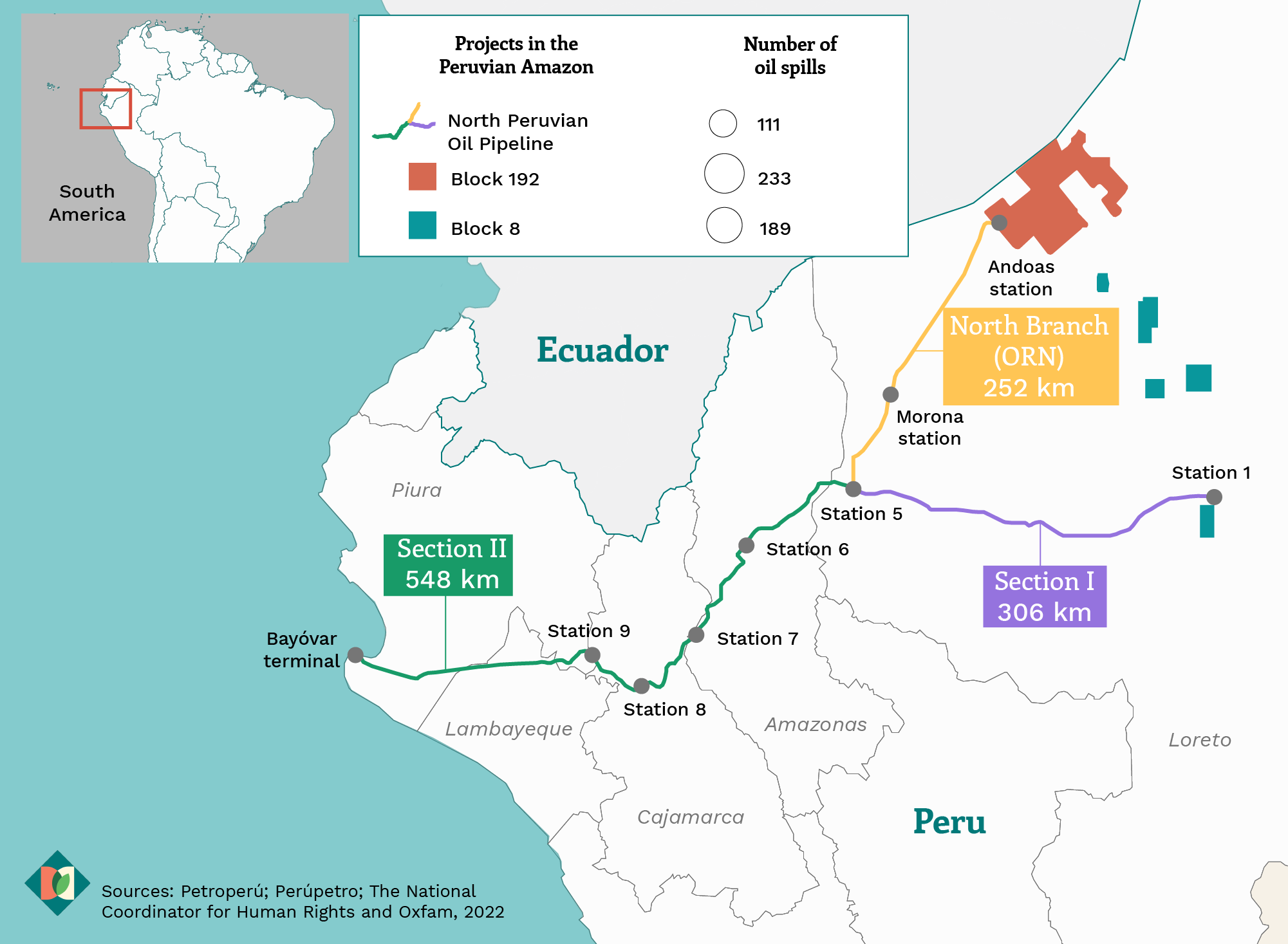
Some of the most notable cases have occurred in the last decade. An incident at Cuninico, in Loreto, in 2014 led to 2,500 barrels of oil being spilled. In 2016, 1,444 barrels spilled at Morona, also in Loreto. That same year, a further 3,000 barrels were released at Imaza, in Amazonas. These three cases alone saw almost 7,000 barrels spill into the rivers, streams and soils of the Amazon.
The 2014 Cuninico incident is perhaps the most significant case, according to Juan Carlos Ruiz, a lawyer and constitutional litigation coordinator for the Instituto de Defensa Legal (IDL), a Peruvian rights NGO. Prior to the spill, he explains, communities living near the disaster were regularly accused of damaging or vandalising the infrastructure; such claims were convenient for Petroperú, the state-owned oil company that operates the pipeline, as it exempted it from any responsibility.
However, Ruiz explained how this argument did not hold up legally, when in 2015, OEFA, the government’s environmental assessment and enforcement agency, presented a historic resolution. “For the first time, it declared Petroperú’s administrative responsibility: first, for not providing maintenance to the pipeline; second, for actual damage to flora and fauna; third, for potential damage to health. Such a decision had never been taken before,” the lawyer recalled.
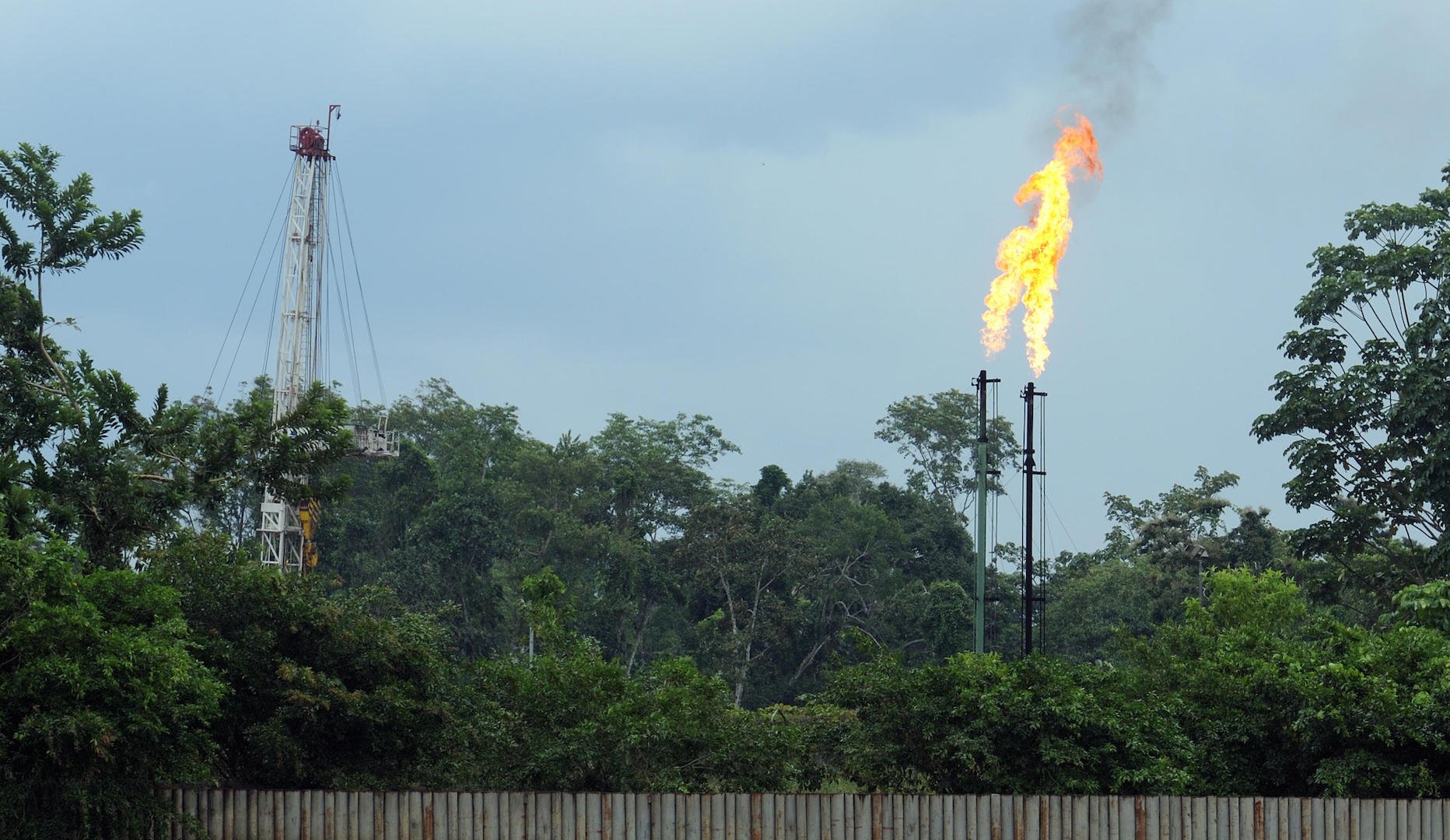
This case also served as the basis for others, such as Imaza and Morona, for which OEFA fined Petroperú 27 million soles (US$7 million), similarly for not carrying out maintenance on the pipeline, for not adopting immediate measures to control and minimise the impacts of the spill, and for causing damage to health, among other charges.
In these three spills, added Ruiz, “the victims wanted it to be recognised that they had not broken the pipeline. They were indignant that they were being accused. They wanted health, because even after collecting the oil, there were after-effects. They said they had been economically harmed, because they lost their farms and could not fish in the rivers, and for that reason they wanted compensation. Then they wanted assurances that there would not be another spill.”
In 2017, Peru’s congress created an investigative commission to determine who was responsible for the spills along the ONP. In its final report, it states that is had “verified the inefficiency, inoperability and lack of commitment with which Petroperú has been acting in the management of the North Peruvian pipeline, in the conservation of the environment, in risk management, in its relationship and social responsibility towards the native communities.”
In August 2019, Law 30993 was enacted, and declared the modernisation of the ONP to be of national interest. Diálogo Chino approached Petroperú for comment on the progress of infrastructure upgrades but received no response.
Preventing future oil spills
Lissette Vásquez, deputy for environment, public services and indigenous peoples at the Peruvian Ombudsman’s Office, pointed out that before drawing up a plan or approving regulations around oil spills, it is first necessary that both the authorities and companies treat the issue as a priority. This, she says, has not been the case in recent years.
“Attention to environmental impacts has not been and is not a priority for many state administrations. This issue has to be prioritised due to the risks and significant impacts they generate on the environment and health,” she said.

César Ipenza, a Peruvian environmental lawyer, explains that organisations such as Osinergmin (the supervisory body for investment in energy and mining) and OEFA only act reactively in the face of oil spills, and only “on consummated facts”.
“What is their job? Basically, to sanction and have a reaction when there is a contamination situation. I think that is the worst thing we can do,” Ipenza said. “If they have the resources, they should have a much more proactive position and get ahead, to ensure that spills don’t happen. It’s about not arriving too late.”
Along the same lines, Lissette Vásquez stressed the need to “strengthen and intensify permanent and preventive oversight of all activities”, in terms of environmental impacts, as well as technical and safety obligations. “We cannot wait until we realise that a contingency plan or an infrastructure is not working. These are aspects that can be detected in permanent and preventive supervisions,” she said.
IDL’s Juan Carlos Ruiz said that, ideally, companies and state entities in Peru would comply with existing regulations to deal with emergencies or avoid them, but described this scenario as far removed from the current reality. For this reason, he highlights the crucial need to establish effective and formalised channels for reporting on spills to the relevant entities.
For this to still be continuing, we must be doing something wrong as a state
Ruiz pointed to the Cuninico spill as an example. This case alone has had five “judicial battles”, relating to: Petroperú’s responsibility for the incident; the impacts on those affected; the compensation of four native communities; the right to payments from oil exploration for indigenous communities; and a lawsuit before the Constitutional Court surrounding Petroperú’s responsibility to carry out the maintenance of the pipeline.
According to Ruiz, the latter case, filed in 2018, “seeks a final judicial decision that obliges the state-owned company Petroperú to supervise and monitor the operations of the ONP, the longest in the country, as well as to provide maintenance to keep its pipelines in safe conditions to avoid new spills.”
Lissette Vásquez of the Ombudsman’s Office said that systems for oversight must permanently guarantee corrective measures or sanctions that disincentivise infringing conduct. Additionally, efforts must be made to ensure measures aimed at environmental remediation are ultimately complied with.
“It is not enough to sanction. It is inconceivable that seven years have passed and we have no information on whether the impacts generated by the Cuninico spill were remediated,” Vásquez lamented. “For this situation to still be continuing, we must be doing something wrong as a state.”
